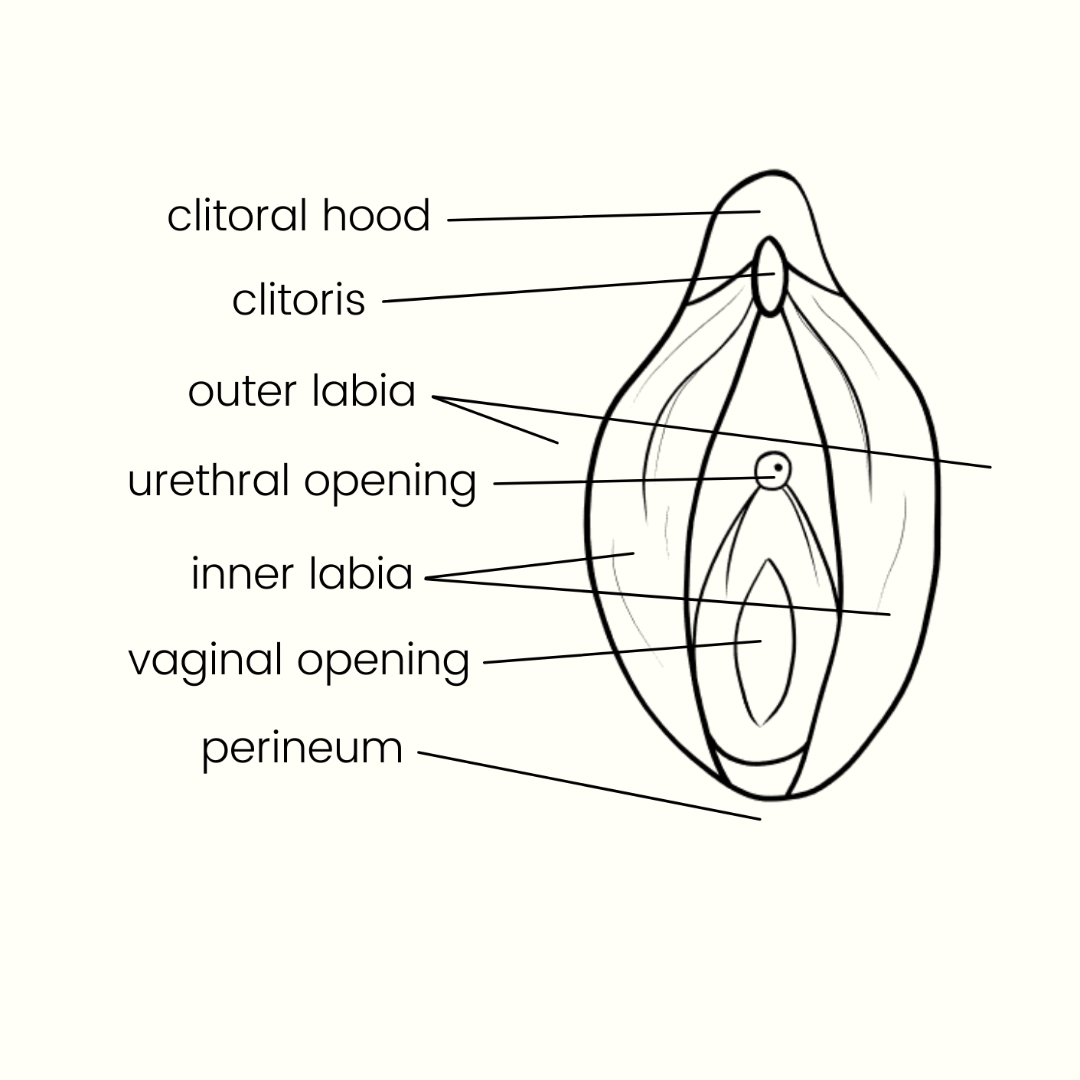Anatomy
External anatomy
The female external genitalia are organs outside the body that serve to protect the reproductive organs and provide sexual pleasure. This area is called the vulva and includes the inner and outer labia, the clitoris, the opening of the urethra, and the vaginal opening. Sometimes the vulva is incorrectly called the vagina. In reality, only the vaginal opening is visible from the outside.
The purpose of the clitoris is to provide sexual pleasure. The clitoris is located above the opening of the urethra, and the clitoral hood protects it from external stimuli. The clitoris is a very sensitive area. The clitoris is a very large organ, and most of its erectile tissue is inside the body.
The urethra is a tube a few centimetres long through which urine leaves the body. The opening of the urethra is located below the clitoris.
The outer labia, or labia majora, are located at the outer edge of the vulva and protect the vagina from external irritants such as dirt and bacteria. The colour and size of the labia vary, and one may also be of a different colour or size than the other. The shape of the labia also varies, as they can be wrinkled or smooth, large or small. Differences between people can be big, and there is no such thing as abnormal.
The inner labia, or labia minora, are the thin folds of mucous membrane between the outer labia. The inner labia do not have hairs, like the outer labia. Like the labia majora, the labia minora protect the vagina and the opening of the urethra from bacteria. They also prevent mucous membranes from drying out and promote sexual pleasure.
The vaginal opening is the only part of the vagina that is visible from the outside. It is located in the lower part of the vulva.
The perineum is a very sensitive area behind the vaginal opening, before the anus.
Internal anatomy
The female internal genitalia are located inside the body and are not visible from the outside. Their role is to produce eggs and to protect and nourish any offspring until birth. In addition, their hormonal functions can have a profound impact on everyday life. The internal genitalia include the vagina, the external orifice of the uterus, the uterus, the ovaries, and the Fallopian tubes.
The Fallopian tubes, or oviducts, are located on either side of the uterus. The egg cell travels along the fallopian tubes to the uterus and is fertilised in the process. If fertilisation does not occur, the egg is discharged through the vagina with the menstrual flow.
The ovaries are small, almond-shaped and -sized organs whose function is to produce and store egg cells. The ovaries also produce female hormones.
The uterus, or womb, is a pear-shaped organ inside which the foetus develops during pregnancy. The lining of the womb thickens at the beginning of the menstrual cycle under the influence of hormones and prepares to receive a fertilised egg. If fertilisation does not occur, the lining of the uterus is shed as menstrual blood through the vagina.
The vagina connects the external sex organs to the uterus through the uterine orifice. The vagina is a tube-shaped organ about 10 cm long that yields considerably during intercourse and childbirth. The soft and slightly wrinkled walls of the vagina keep it moist. The vagina is a self-cleaning organ, and to clean itself, it secretes a white discharge, which starts to be secreted about a year before menstruation starts. The amount and composition of vaginal discharge vary at different stages of the menstrual cycle. The most discharge occurs during the most fertile part of the menstrual cycle, about two weeks before menstruation. The most sensitive area of the vagina is the area around the outer mouth and the G-spot on the front wall of the vagina near the opening. Otherwise, the vagina is quite numb inside.
The hymen is located at the opening of the vagina and may partially cover the vaginal opening. The hymen is thin tissue. The absence of a hymen is not a sign of loss of virginity, as the hymen can stretch or tear before the first intercourse, or it can naturally be almost unnoticeable.

